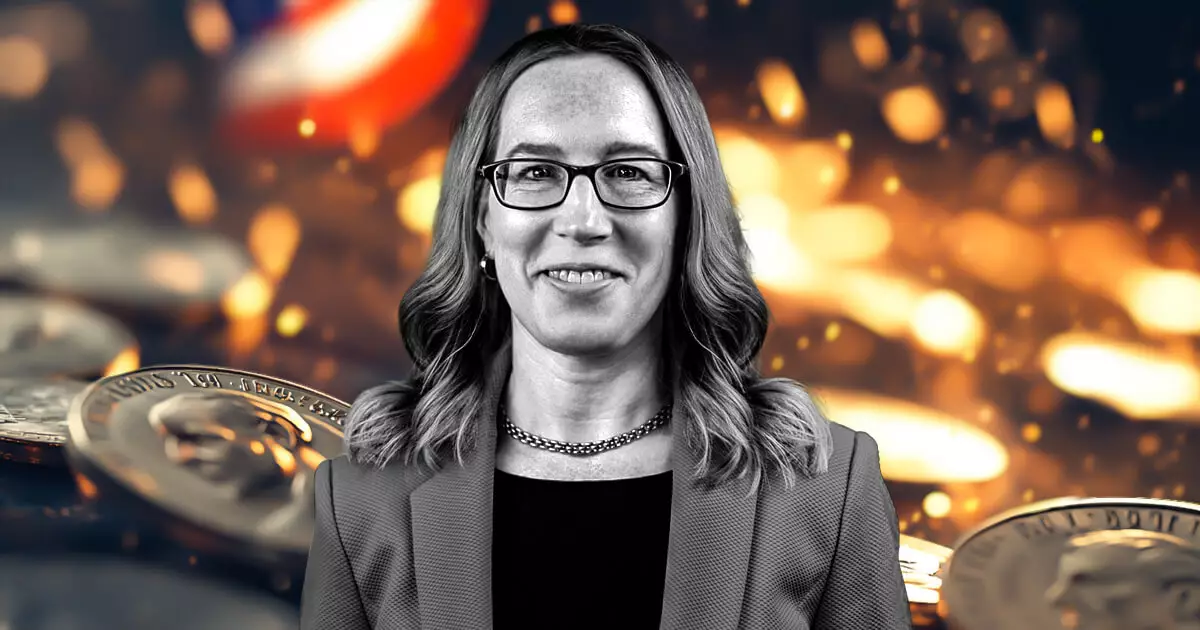The rapidly evolving world of cryptocurrencies has led to the emergence of various digital assets, including the increasingly popular category of memecoins. Recently, U.S. Securities and Exchange Commission (SEC) Commissioner Hester Peirce shed light on the regulatory challenges posed by these tokens. In a February 11 interview with Bloomberg, Peirce acknowledged a significant gap in the existing regulatory framework, asserting that many memecoins do not fit neatly into the definition of securities as outlined by current laws. This revelation raises critical questions about the oversight of a category of cryptocurrencies that is gaining traction among investors, despite lacking inherent value.
Peirce hinted at a potential need for legislative intervention from Congress to provide clarity in this burgeoning sector. Such legislation could help determine the role of various regulatory bodies, including the possibility of the Commodity Futures Trading Commission (CFTC) stepping in to govern memecoins. This highlights the pressing necessity for regulatory measures that keep pace with the innovative and often chaotic nature of cryptocurrency markets.
Further complicating this issue is the perspective offered by White House crypto advisor David Sacks, who proposes that memecoins be classified as collectibles rather than securities. He argues that the primary value derived from these tokens stems from market sentiment akin to collectibles like baseball cards or stamps. This view challenges traditional thinking about cryptocurrencies, pushing for a narrative that sees value in community engagement and cultural phenomena rather than purely as financial instruments.
Nate Geraci, President of the ETF Store, echoes Sacks’ sentiments, reinforcing the idea that memecoins should be categorized more as digital collectibles than as securities. This perspective is crucial because it indicates a shift away from viewing these digital assets through the lens of conventional finance, opening up a broader conversation about value creation in the digital economy. If memecoins are officially deemed collectibles, it could relieve some pressure on regulatory bodies while providing a safety net for consumers engaging with these assets.
Memecoins have witnessed a meteoric rise in popularity over the past year, often fueled by internet culture and prominent public figures. Tokens associated with memes frequently lack significant intrinsic value, stirring a whirlpool of speculation within the market. The recent involvement of high-profile personalities, such as former President Donald Trump and Melania Trump, in launching their memecoins exemplifies how mainstream culture influences the crypto sphere. Furthermore, countries like the Central African Republic entering the memecoin fray with their own unique tokens only underscores the pervasive momentum of this asset class.
As the cryptocurrency ecosystem continues to expand, the conversation surrounding memecoins will only grow in urgency. The divergence between viewing these tokens as collectibles versus securities reflects broader societal trends related to digital assets and consumer behavior. Ultimately, both regulators and the crypto community will have to navigate this complex landscape, ensuring that innovation doesn’t outpace the necessary supervision to protect investors. The popularity of memecoins shows no signs of waning, suggesting they will remain a defining feature in the evolving narrative of digital currencies.

